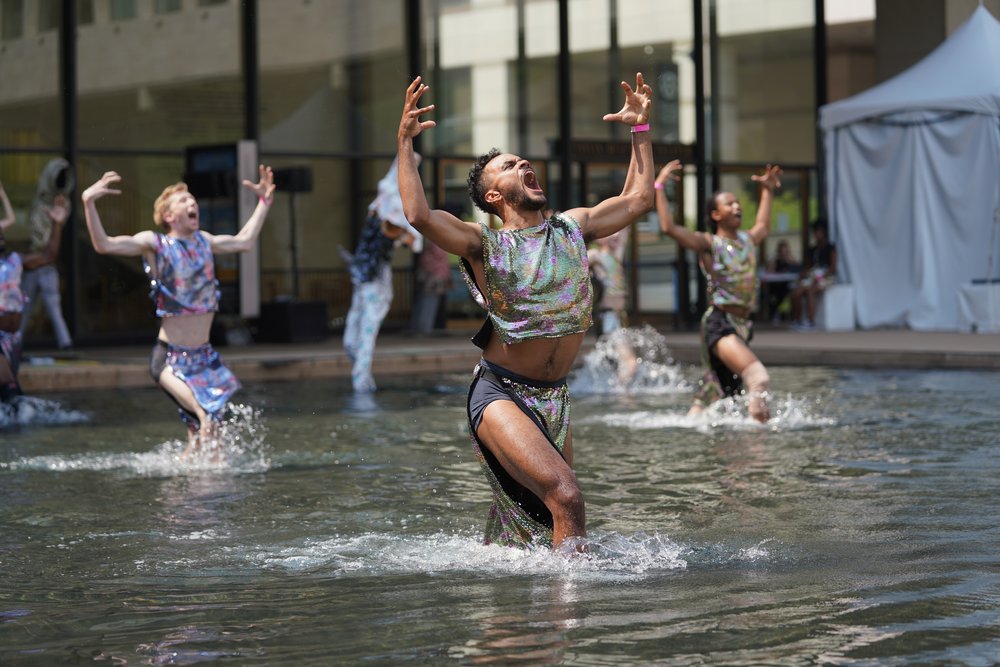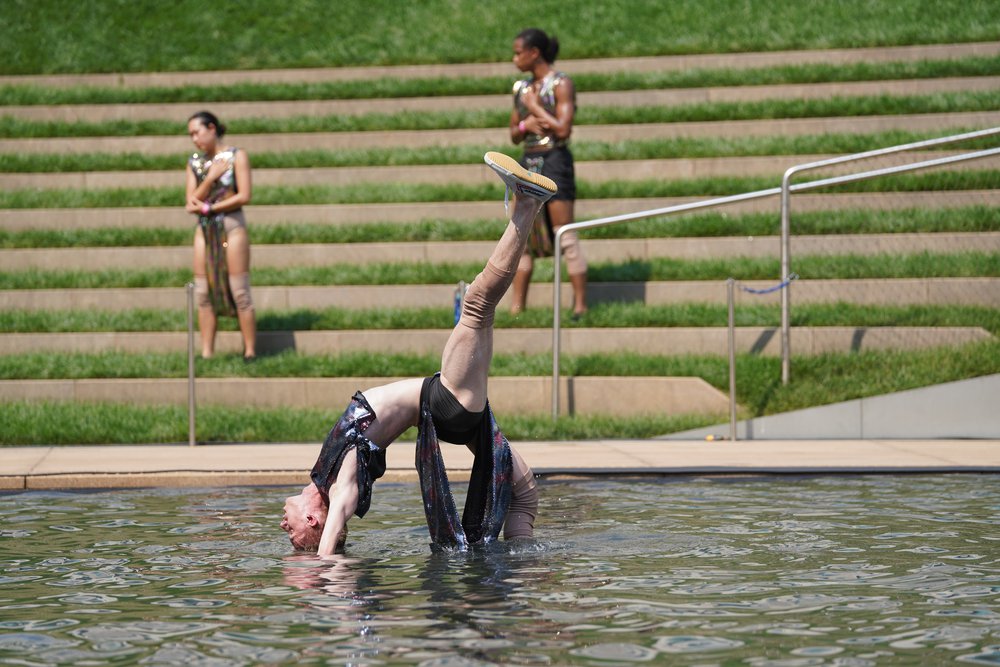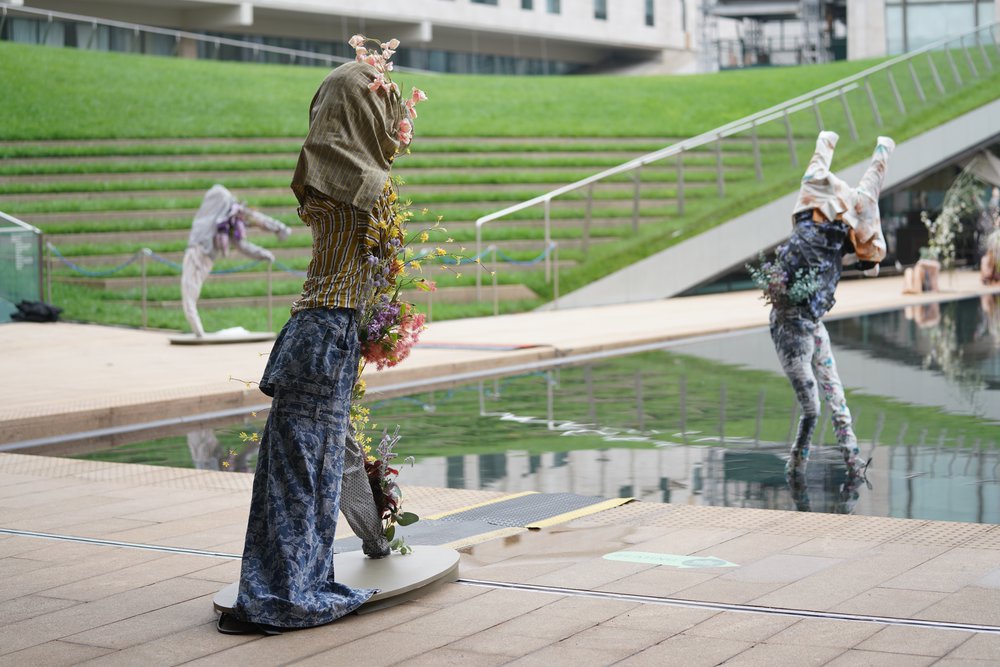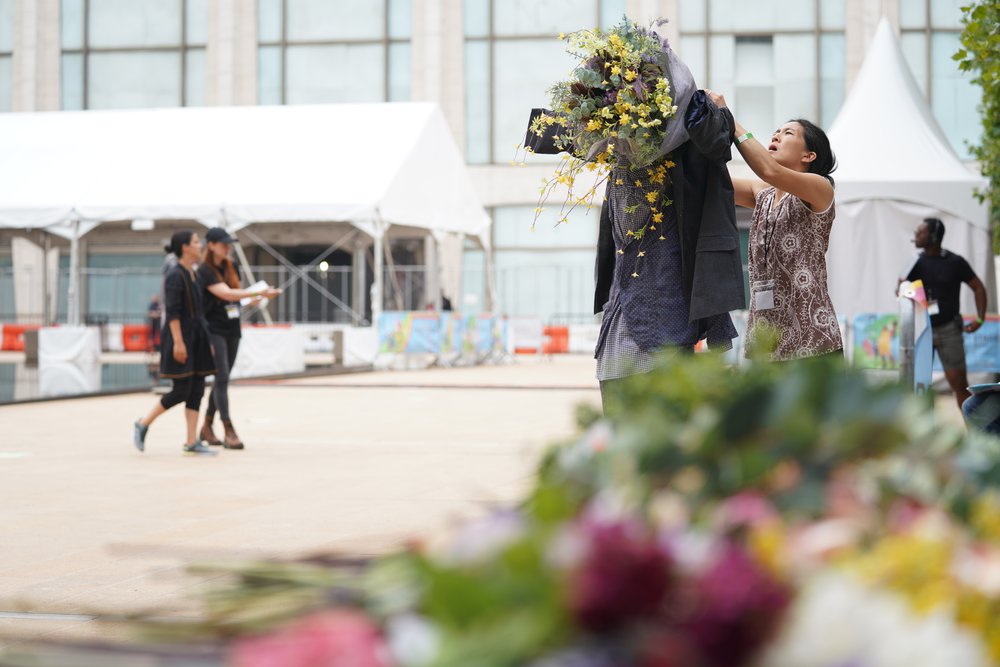An Invitation To Take A Breath: 'You Are Here' At Lincoln Center Combines Sculpture, Sound, And Dance
July 23, 2021, 3:25 p.m.
The work from Andrea Miller invites people to reflect on what it was like to live in the city during the pandemic.

Culture is reopening across New York, and many people are already filling their calendars for late summer and early fall. But a new multimedia work at Lincoln Center that incorporates sculpture, a soundscape, and dance is inviting people to reflect on what it was like to live in the city during the pandemic.
The project, called “You Are Here,” was conceived by Andrea Miller, the first choreographer to be an artist-in-residence at the Metropolitan Museum of Art and the head of her own dance company, Gallim. She was filming a dance video at Hearst Plaza in Lincoln Center in the fall, when, she said, “A security guard, Lila Lomax, came through our rehearsal and just started dancing, and she was just beaming as she danced in her security-guard outfit and she kind of blew me away.”

Miller had never worked with non-dancers before, but she wanted to celebrate not only artists, but also the many unsung people behind the scenes who were necessary to getting performers back on stages post-pandemic, from ushers to administrators to educators to the nurses who kept all of them healthy. Also, she felt that once arts venues got the all-clear to come back, all the feelings arising from the months of isolation were pushed aside. “I was concerned that it was all, go go go, it’s happening, let’s get back to work—without taking the time to actually reflect on what this was and how this was affecting us,” Miller said.
She wanted to start with a sound installation, because she wasn’t sure how comfortable people would be getting close to real performers. And she wanted the sound to be played by sculptures that would represent the people telling their stories—and would also represent all the people who are no longer to tell stories of their own.
Lincoln Center liked the idea and decided it would work as part of its Restart Stages initiative. Lincoln Center and organizations like the Metropolitan Opera and New York City Ballet, plus arts and community partners, like Ballet Hispánico and New York-Presbyterian Hospital, nominated staff members to be part of the project.
In the end, 25 participants were interviewed about their COVID experiences, including Lincoln Center security guard Lomax, and Valarie Wong, a critical care nurse who was on the frontlines of the pandemic.
The interviews are intimate, often heartbreaking; Wong describes how she felt when the hospital assigned her her first COVID patient: “They told me that person was going to be mine and I just started crying. Out of fear. Because I thought it was a death sentence.”
Sound artist and composer Justin Hicks combined the interviews with music and breathing and designed the soundscape; it’s projected from speakers hidden in 14 sculptures scattered across the northwest corner of Lincoln Center’s campus.

The sculptures are surprising. Created by set designer Mimi Lien, who also crafted the popular Lincoln Center lounging area The Green, they’re all torsos and limbs—no heads—dressed in real clothes in a zany variety of patterns, and bedecked with dried and fresh flowers. The soundscape sometimes makes it seem like the sculptures are interacting with each other. Sometimes they all play music at once and it rings across the plaza; sometimes only a single sculpture describes a personal experience with COVID. Sometimes all you hear is the sound of slow, deep breathing.

“I think there is a moment of pause that can happen when things quiet down,” said sound artist Hicks, “and you can sit next to a sculpture and hear someone talking to you, and feel this responsibility to listen. I think it pulls you in and it kind of quiets you.”
Beginning Saturday, the installation morphs into a dance piece. Small groups of portrait performers will join with Miller’s dance company Gallim to tell their stories live.
“I felt that we had, for a year now, been experiencing art and our relationships mediated through technology,” Miller said. And so I wanted to evolve the work from the sound installation, through the speakers, into something where we could really see the people behind those voices.”
For ticket information, visit Lincoln Center’s website.